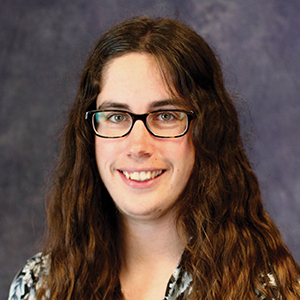
Ants in the lab
For more than a decade, researchers Danny Reinberg and Shelley Berger have studied ant communities to learn about links between epigenetics, gene expression and complex biological processes — and they have built their own cooperative scientific community in the process.
The two first met in the early 1990s, when Reinberg was a professor at the University of Medicine and Dentistry of New Jersey and Berger was a postdoctoral fellow at Harvard. Both studied transcription and gene expression, Reinberg by working out biochemical mechanisms and Berger by searching for new genes. At the time, Reinberg, Berger and other scientists were uncovering the nuts and bolts of epigenetics: how chemical tags attached to DNA and surrounding proteins control DNA packaging to specify which genes each cell within an organism expresses.
“We had very lively conversations debating the utility of biochemistry compared to genetics,” Berger recalled. “Over the years, I think it would be fair to say we developed a lot of respect for one another.”
Their shared interest in ants began in 2005 at an epigenetics conference in Mexico City when a strike tied up traffic and trapped them for hours in a cab they were sharing. They agreed that Reinberg’s experimental system of mammalian cells and Berger’s work with yeast limited their ability to dissect the role of epigenetic tags in complex processes such as neuroscience, aging and animal behavior. They needed a better model organism.
At one point, Berger’s eyes lit up. On a recent family vacation to Costa Rica, she had seen leaf-cutter ants in action. These ants run agrarian societies, finding and harvesting leaves that they use to grow their fungal food. As an undergraduate, Berger had learned that individual ants of the same species are are closely related sisters: They share 75% of their DNA but can adapt radically different traits and behaviors when exposed to different environments.

New York University
As a Howard Hughes Medical Institute investigator, Danny Reinberg applied for the HHMI Collaborative Innovation Award, a four-year grant supporting investigators who form teams to pursue outside-the-box projects.
|

courtesy of Shelley Berger
Shelley Berger, pictured here in her lab at the University of Pennsylvania, suggested to Danny Reinberg in 2005 that ants could be a powerful model organism to study epigenetics.
|
“The vast differences in the way ants look and the way they act are due to epigenetic regulation.” Berger said. “They have similar DNA, but during their lifetimes they can change because of environmental differences which lead to their aging differently or maybe even dying of different diseases.”
Berger suggested that ants held the promise of becoming a uniquely powerful model organism to study epigenetics in action. Reinberg instantly agreed that they should work on ants together.
In a recent paper in the Annual Review of Genetics, Reinberg shared some of what they’ve learned about the molecular mechanisms underlying social behavior since that cab ride.
A powerful model
Like termites, many bees and wasps, snapping shrimp, and naked mole rats, ants are eusocial, exhibiting the highest levels of cooperation found in animals. Ants and other eusocial animals divide labor among two or more morphologically and behaviorally distinct castes; reproductive castes produce offspring while worker castes care for young, maintain and defend the hive, and forage for food.
Ant colonies are superorganisms: Each caste functions like an organ — an ovary, a reproductive tract, a muscle or a stomach — to accomplish what the colony needs to survive. Within its caste, each ant functions like a cell, relying on inter-organism communication and environmental cues to dictate behavior and maximize colony success. Their unique social structure makes ants wildly successful; they are found on nearly every landmass on Earth, and their global biomass rivals that of humans. Ants are also capable of feats of cooperation: foraging for food over long distances, building bridges with their own bodies and managing colonies of fungi or other insects to produce food.

With only one or a few reproducing queens in each ant colony, all colony members are closely related siblings. Despite similar genetics, castes may have distinct sizes, brains, body plans, behaviors and social interactions. Like genetically identical cells in a multicellular organism, the identity and behavior of individual ants depend less on DNA sequence than on how signal inputs at key points in differentiation and development act on that sequence.
Ants’ unique genetic makeup allows Reinberg, Berger and their collaborators to study epigenetic factors behind development, behavior and other processes in isolation from the genetics.
Building a team
After forming their partnership during the cab ride, Reinberg and Berger knew they needed a large and unconventional funding source, because none of the ant genomes had been sequenced. In 2007, the Howard Hughes Medical Institute announced the Collaborative Innovation Award, a four-year grant funding HHMI investigators to form teams of scientists and pursue ambitious, outside-the-box projects. Reinberg, an HHMI investigator, suggested they apply.

Their first step was to find a collaborator who had experience working with ants in the lab. Berger’s friend Laurence Zwiebel, an insect biologist at Vanderbilt, recommended ant biologist Jürgen Liebig of Arizona State University. Liebig was studying the carpenter ant Camponotus floridanus and the jumping ant Harpegnathos saltator. He was excited to combine his knowledge of ant biology with Reinberg’s and Berger’s experience in biochemistry and genetics to study behavior at the molecular level.
“You can study a whole society in a Petri dish or a shoe box when you work with ants,” Liebig said. “This makes it much easier to study the organization of societies as you can control and replicate the experiments much better.”
The carpenter ant has two types of workers (major and minor), while the jumping ant has two types of reproductive castes (queens and pseudoqueens). The scientists agreed that Berger would study the carpenter ant, and Reinberg would study the jumping ant — to exploit the species’ unique caste structures and study different facets of epigenetics.
Liebig suggested that they study the epigenetics of aging in addition to behavior. In many ant species, the queen lives much longer than nonreproductive castes, sometimes up to 30 years. Liebig knew that carpenter ant queens live at least 17 years, while worker females live only two years. He also knew that when jumping ant queens died, nonreproductive workers could become reproductive pseudoqueens that maintained the colony and lived five times longer than normal workers. In the laboratory, Liebig had worked out protocols to switch jumping ant workers to pseudoqueens and back again, with concomitant changes in longevity.
The HHMI reviewers recognized that studying epigenetics in ants could uncover mysteries behind human health, behavior and aging at a level not available in other model organisms. Reinberg and his team received the Collaborative Innovation Award in 2008 and 2012, jumpstarting their entry into ant epigenetics.
Making a model organism

By the time they received the HHMI funds, Reinberg had moved to the New York University School of Medicine and Berger to the University of Pennsylvania School of Medicine. Though ant colonies are rare in medical school labs, the deans at NYU and Penn, like the HHMI, understood the potential impacts this research could have on human health. The deans provided Reinberg and Berger with the financial support to build temperature-controlled ant rooms capable of housing dozens of ant colonies in clear plastic boxes.
Two intrepid postdocs agreed to lead the labs’ first studies in carpenter and jumping ants: molecular biologist Roberto Bonasio in Reinberg’s lab and computational biologist Daniel Simola in Berger’s lab. Bonasio and Simola learned to use each species’ unique reproductive strategy to maintain the colonies. They also learned how to conduct and interpret assays that quantify foraging, scouting and other social behaviors for later use in epigenetics research.
“The two of them really were the reason we got this going so beautifully in our two labs,” Berger said of Bonasio and Simola. “We struck it rich in getting two really brilliant trainees.”
The two labs clean the nests in their ant colonies once a week and feed the ants multiple times per week. The carpenter ants get sugar-water, mealworms and protein supplements; the jumping ants get live crickets. To meet U.S. Department of Agriculture requirements, the ants live in escape-proof containers with slippery walls in a sealed containment facility filled with oil traps.
When worker ants determined to forage for food manage break to out of their nest, they cannot reproduce and do not survive for long, especially if they encounter hostile workers from a different colony.

Using the genomics technology available at the time, it took the team two years to sequence, annotate and compare the carpenter and jumping ant genomes and transcriptomes. They discovered that the two types of ants had two common epigenetic tags (DNA methylation and histone acetylation) and enzymatic machinery to add and remove them.
Interspecies and intercaste differences in epigenetic tag prevalence and the expression of acetylating and methylating enzymes suggested that epigenetics plays a role in the social structure of each species. The scientists hypothesized that changing epigenetic tags could change behavior. Liebig’s lab began feeding carpenter ants epigenetic drugs in their water. This strategy made the foragers more active but did not change the soldiers’ behavior.
As in other animals, the brains of young ants are more plastic than those of adults; they are still developing and easier to change with drugs and other interventions. The researchers decided to switch from feeding adult ants drugs to injecting the drugs into the brains of young ants. When they injected newly hatched carpenter ant soldiers with inhibitors of deacetylation enzymes, the ants behaved like foragers instead of soldiers. The behavioral switch happened after injection with drugs that blocked several epigenetic enzymes and with RNA molecules that blocked specific enzymes.
“Although the drugs are very short-lived (lasting only a few hours), we could get a long-lasting epigenetic switch of behavior that could last 50 days,” Berger said. “The soldiers would now forage as long as we could assay them.”

“There was only a very small window in development in which we could change the phenotype,” Reinberg said. “Once the ant acquired the change, it was stable. That immediately told us that, yes, epigenetics is important.”
Armed with their knowledge of ant genetics and gene expression, Reinberg, Berger, Liebig and their collaborators turned to the gold standard in establishing a model organism: generating a heritable genetic mutation. In the fruit fly and other insects, the olfactory co-receptor Orco is required for olfactory function but not for survival. The team therefore decided to target Orco to generate adult mutant jumping ants that could demonstrate the role of Orco in social behaviors.
The ability to produce reproductive pseudoqueens from mutant jumping ant workers would make it possible to establish colonies of mutant ants without relying on limited numbers of true queens. Learning to inject jumping ant embryos with the CRISPR-Cas9 machinery necessary to remove the Orco gene and then raise the resulting larvae to healthy, reproducing adults took years of trial and error. The researchers had to make tough decisions about which strategies to pursue.
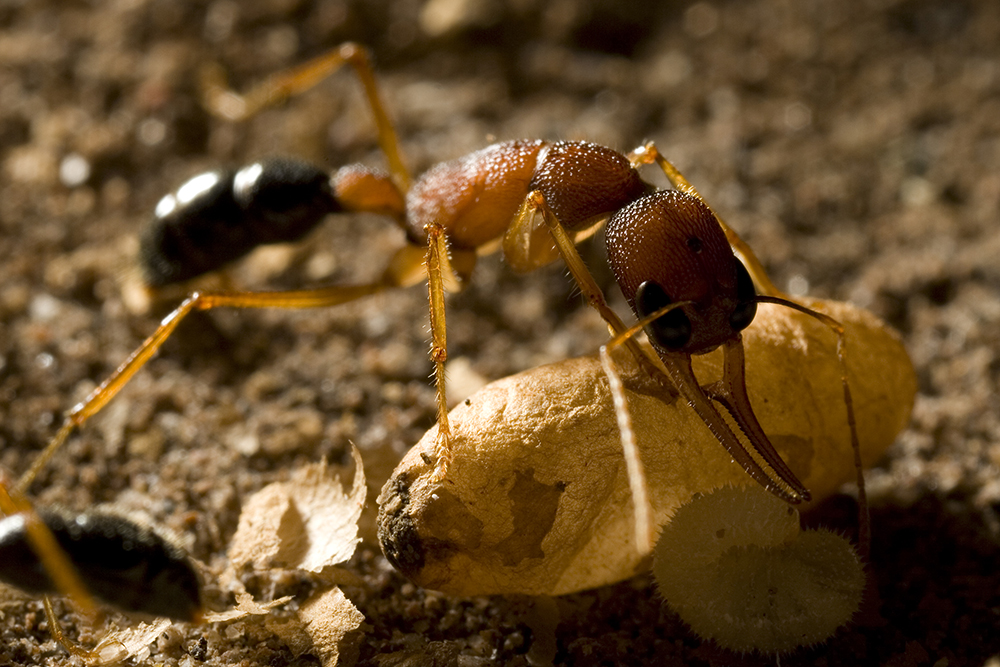
“A lab is a company with one mission to accomplish,” Reinberg said. “We needed to abort some projects to make sure we could accomplish the mission. It was a very step-by-step learning experience.”
Finally, postdoc Hua Yan, grad student Comzit Opachaloemphan and NYU professor and fruit fly expert Claude Desplanestablished a successful CRISPR-Cas9 protocol. Jumping ants missing the Orco gene had reduced sensitivity to odorant chemicals and loss of brain regions responsible for processing olfactory signals. The mutant ants also displayed impaired social interactions with other ants, wandering outside the nest but not foraging for food and less able to mate, reproduce and care for their young. This study paved the way for future work on the role of olfaction in eusocial behavior and established the jumping ant as a genetic model organism.
The future of ant epigenetics
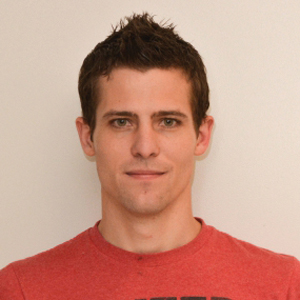
Reinberg and Berger continue to build on their decade of experience in ant epigenetics. After the HHMI Collaborative Innovation Award program ended in 2016, they secured traditional National Institutes of Health funding from the National Institute on Aging to apply their genetic and epigenetic tools in aging research.
Their labs are working to define gene expression changes behind caste development, behavior and aging, especially in the brain. Led by postdoc Karl Glastad, they are defining epigenetic pathways that change the brain to control caste identity. They hope to find epigenetic tags that persist as an ant transitions from one caste to another and continue to affect the ant’s behavior, anatomy and/or longevity. In the future, they hope to expand the genetic toolkit of carpenter and jumping ants to rival that of more established model organisms, such as the fruit fly.
Reinberg, Berger and Liebig are proud of the work their teams have done to establish new model systems to study epigenetics.
“Each of us had to leave their comfort zone and engage in something new,” Liebig said. “This allowed cross-fertilization from genetics, epigenetics and behavioral ecology and led to a boost in both areas. Ants have now become a new model system in genetics.”
“I was hoping that the brain was going to be plastic enough that we could manipulate it and change the behavior,” Berger said, “but I’ve been amazed that we can alter the brain using these methods. I think we’ll be able to accomplish the same thing in aging as well.”
“There is nothing impossible in science if you are persistent and passionate,” Reinberg said. “Now I have to convince the entire scientific community that it was a success.”
A lot has changed since that long cab ride in Mexico City. Reinberg and Berger, with the help of their collaborators and trainees, moved epigenetics research out of the test tube and into a complex model organism. Roberto Bonasio and Hua Yan are now independent investigators; together with Reinberg, Berger, Liebig and Desplan, they will carry ant epigenetics research decades into the future.
“With every model system we have used over the years,” Reinberg said, “we have learned a lot from each of them that can be applied to humans. I do not know what exactly we are going to learn, but I know that we will learn at least two or three important things.”

Enjoy reading ASBMB Today?
Become a member to receive the print edition four times a year and the digital edition monthly.
Learn moreGet the latest from ASBMB Today
Enter your email address, and we’ll send you a weekly email with recent articles, interviews and more.
Latest in Science
Science highlights or most popular articles

Bacteriophage protein could make queso fresco safer
Researchers characterized the structure and function of PlyP100, a bacteriophage protein that shows promise as a food-safe antimicrobial for preventing Listeria monocytogenes growth in fresh cheeses.

Building the blueprint to block HIV
Wesley Sundquist will present his work on the HIV capsid and revolutionary drug, Lenacapavir, at the ASBMB Annual Meeting, March 7–10, in Maryland.
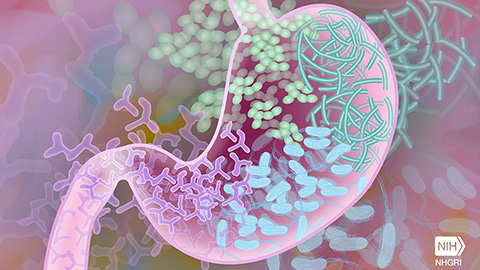
Gut microbes hijack cancer pathway in high-fat diets
Researchers at the Feinstein Institutes for Medical Research found that a high-fat diet increases ammonia-producing bacteria in the gut microbiome of mice, which in turn disrupts TGF-β signaling and promotes colorectal cancer.

Mapping fentanyl’s cellular footprint
Using a new imaging method, researchers at State University of New York at Buffalo traced fentanyl’s effects inside brain immune cells, revealing how the drug alters lipid droplets, pointing to new paths for addiction diagnostics.

Designing life’s building blocks with AI
Tanja Kortemme, a professor at the University of California, San Francisco, will discuss her research using computational biology to engineer proteins at the 2026 ASBMB Annual Meeting.
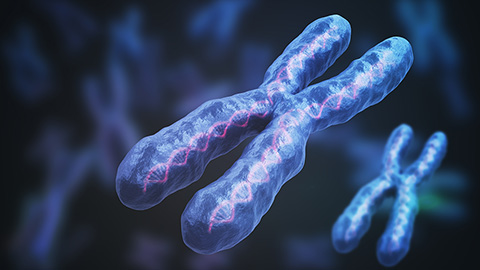
Cholesterol as a novel biomarker for Fragile X syndrome
Researchers in Quebec identified lower levels of a brain cholesterol metabolite, 24-hydroxycholesterol, in patients with fragile X syndrome, a finding that could provide a simple blood-based biomarker for understanding and managing the condition.

